Banh Gio, a beloved Vietnamese dish, is a culinary gem that holds a special place in the hearts and taste buds of many. This delectable delicacy is wrapped in a steamed banana leaf, revealing a treasure trove of flavors within.
With a soft and chewy rice flour dough encasing a tantalizing filling, Banh Gio offers a delightful experience to anyone lucky enough to savor it. Its origins date back to Vietnamese traditions, where it became an integral part of festivals and celebrations.
Whether enjoyed as a savory breakfast or a satisfying snack, Banh Gio captures the essence of Vietnamese cuisine with its unique blend of ingredients and unmistakable taste. Join us on a journey as we explore the secrets and techniques behind this timeless Vietnamese dish.
What is banh gio?
Banh Gio is a traditional Vietnamese dish that holds a special place in the hearts of the Vietnamese people. It is a type of steamed rice cake wrapped in a banana leaf, with a filling consisting of ground pork, mushrooms, and various aromatic herbs and spices. The name “Banh Gio” translates to “rice cake in the shape of a leaf,” which aptly describes its appearance.
Historically, Banh Gio has deep roots in Vietnamese culture, tracing back to ancient times. It is believed to have originated in northern Vietnam, where it was commonly prepared as a breakfast item or enjoyed as a snack. Over the years, Banh Gio has become an integral part of Vietnamese cuisine, cherished for its unique flavors and textures.
Understanding Banh Gio requires delving into its traditional ingredients. The rice flour dough serves as the base, providing a soft and chewy texture to the cake. The filling, typically made with ground pork, is seasoned with a blend of spices such as garlic, shallots, and black pepper. Fragrant wood ear mushrooms and dried shrimp are often added to enhance the umami flavors. The addition of fresh herbs like cilantro and spring onions adds a burst of freshness to the dish.
Each ingredient in Banh Gio plays a crucial role in creating its distinct taste. The rice flour dough provides a comforting and slightly sticky texture, while the filling brings savory notes and a delightful combination of flavors. The aromatic herbs and spices contribute to the overall aroma and complexity of the dish, making each bite a delightful experience.
Banh Gio is not just a culinary delight, but also a cultural symbol that represents the rich heritage of Vietnamese cuisine. Its historical significance and unique flavors make it a beloved dish enjoyed by people of all ages across Vietnam and beyond.
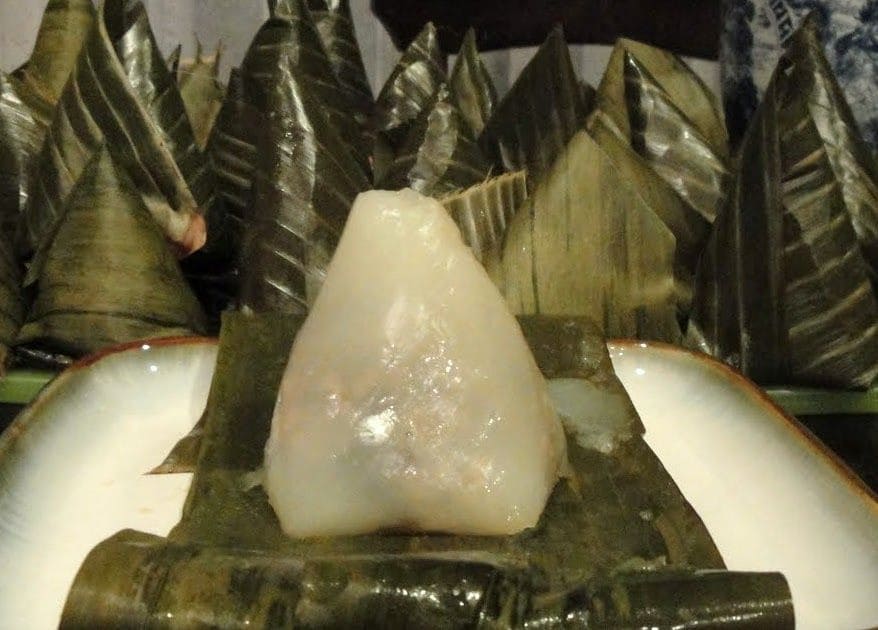
What is the texture of banh gio like?
The texture of Banh Gio is soft and chewy. The rice flour dough, when properly cooked, has a tender and slightly sticky consistency. It offers a pleasant chewiness that complements the savory filling inside.
The texture of Banh Gio is often described as delicate and comforting, providing a satisfying mouthfeel with each bite. The combination of the soft dough and the flavorful filling creates a delightful contrast, making Banh Gio a beloved Vietnamese delicacy enjoyed by many.
Banh gio recipe
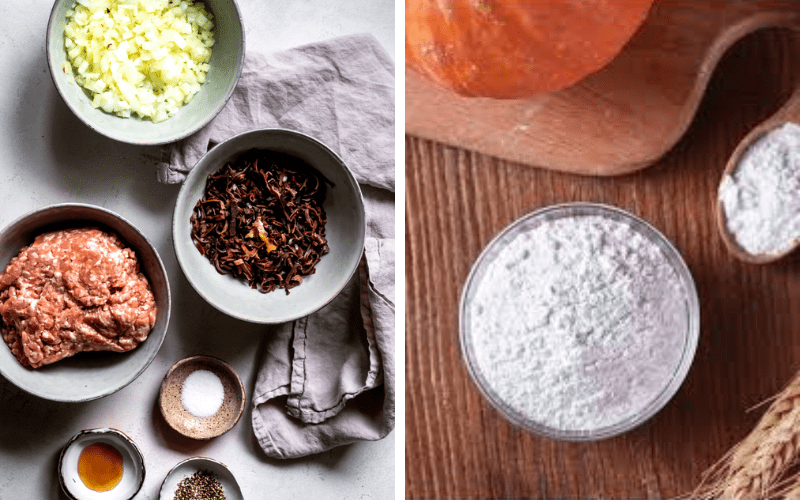
Before starting the recipe, ensure you have banana leaves available for wrapping the Banh Gio. If banana leaves are not accessible, you can use parchment paper as a substitute.
How To Make Banh Gio?
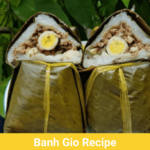
Discover the secrets of Banh Gio, a delicious Vietnamese delicacy. Master the art of making this flavorful dish with our step-by-step recipe guide. Dive into the cultural significance and explore variations of Banh Gio that will tantalize your taste buds.
- Steamer
- Mixing bowls
- Knife
- Cutting board
- Saucepan
- 2 cups rice flour
- 1 cup tapioca starch
- 1 teaspoon salt
- 1 ½ cups water
- 1 pound ground pork
- 4 dried shiitake mushrooms, soaked and diced
- 2 tablespoons dried shrimp, soaked and minced
- 2 cloves garlic, minced
- 2 shallots, finely chopped
- 1 teaspoon ground black pepper
- 1 tablespoon fish sauce
- 1 tablespoon vegetable oil
- 12 banana leaves (or parchment paper) for wrapping
Preparing the rice flour dough
In a mixing bowl, combine the rice flour, tapioca starch, and salt. Mix well.
Gradually add water while stirring continuously until a smooth batter forms.
Cover the bowl and let the batter rest for 30 minutes to allow the starches to hydrate.
Preparing the filling
In a saucepan over medium heat, add vegetable oil and sauté the garlic and shallots until fragrant.
Add the ground pork and cook until it turns brown and is cooked through.
Add the diced shiitake mushrooms and minced dried shrimp. Stir well.
Season the mixture with ground black pepper and fish sauce. Continue cooking for another 2-3 minutes.
Remove the filling from heat and let it cool.
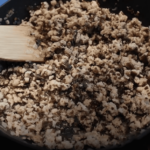
Assembling and cooking Banh Gio
Prepare the banana leaves by cutting them into squares or rectangles, approximately 6×6 inches.
Take a piece of banana leaf and briefly dip it in boiling water to soften it.
Place about 2 tablespoons of the rice flour dough in the center of the banana leaf.
Flatten the dough to form a thin circular layer, leaving space at the edges for folding.
Add a spoonful of the filling onto the dough in the center.
Fold the edges of the banana leaf over the filling, creating a pyramid-shaped package. Secure it with a toothpick if needed.
Repeat the process until all the dough and filling are used.
Cooking methods
Steaming method
Arrange the wrapped Banh Gio in a steamer basket, making sure they are not tightly packed.
Steam the Banh Gio over high heat for about 20-25 minutes until the dough is cooked and firm.
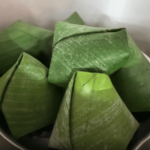
Boiling method
Bring a large pot of water to a boil.
Carefully place the wrapped Banh Gio into the boiling water.
Boil for approximately 20-25 minutes until the dough is fully cooked.
Once cooked, remove the Banh Gio from the steamer or pot. Allow them to cool slightly before serving.
Enjoy the delicious Banh Gio as a snack or appetizer, accompanied by your favorite dipping sauce.
You can adjust the filling ingredients and quantities according to your preferences. Optional additions may include wood ear mushrooms, spring onions, or cilantro for added flavor.
Table about nutrient facts of banh gio
Banh Gio is a flavorful Vietnamese dish that offers not only delightful taste but also some nutritional value. Let’s take a look at its nutrient content and potential health benefits:
| Nutrient | Amount Per Serving (1 Banh Gio) |
| Calories | 180 |
| Total Fat | 5g |
| Saturated Fat | 2g |
| Cholesterol | 20mg |
| Sodium | 380mg |
| Total Carbohydrate | 26g |
| Dietary Fiber | 1g |
| Sugars | 0g |
| Protein | 8g |
| Vitamin A | 0% |
| Vitamin C | 0% |
| Calcium | 2% |
| Iron | 6% |
Note: Nutrient values may vary depending on the specific ingredients and quantities used in the recipe.
Banh Gio, despite being a delicious treat, should be enjoyed in moderation due to its relatively high calorie and sodium content. However, it does offer some health benefits:
- Protein: Banh Gio contains a moderate amount of protein, which is essential for muscle repair and growth.
- Dietary Fiber: Although Banh Gio is not particularly high in fiber, the inclusion of vegetables or herbs in the filling can increase the fiber content. Fiber aids in digestion and helps maintain a healthy digestive system.
- Iron: Banh Gio provides a small amount of iron, an important mineral that supports oxygen transportation in the body and helps prevent anemia.
- Cultural Significance: While not directly related to its nutrient content, Banh Gio holds cultural significance in Vietnamese cuisine and can contribute to a sense of connection and enjoyment of diverse culinary traditions.
As with any food, it’s important to balance the consumption of Banh Gio with a well-rounded and varied diet to ensure you receive a wide range of essential nutrients.
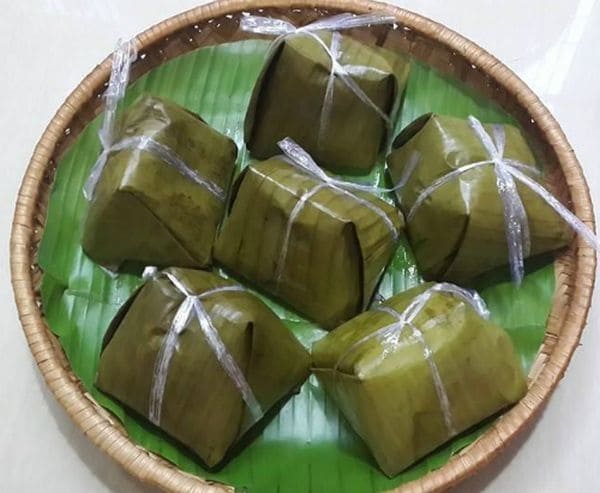
What to serve with banh gio?
Banh Gio is a versatile dish that can be enjoyed on its own or paired with various accompaniments. Here are some suggestions for serving Banh Gio and recommended complementary sauces and condiments:
Dipping sauces
- Nuoc Cham: A classic Vietnamese dipping sauce made with fish sauce, lime juice, sugar, garlic, and chili. It provides a perfect balance of sweet, sour, and savory flavors.
- Hoisin Sauce: A rich and slightly sweet sauce made from fermented soybeans, garlic, vinegar, and spices. It adds a delightful depth of flavor to Banh Gio.
- Soy Sauce: A simple and versatile option, soy sauce complements the savory flavors of Banh Gio.
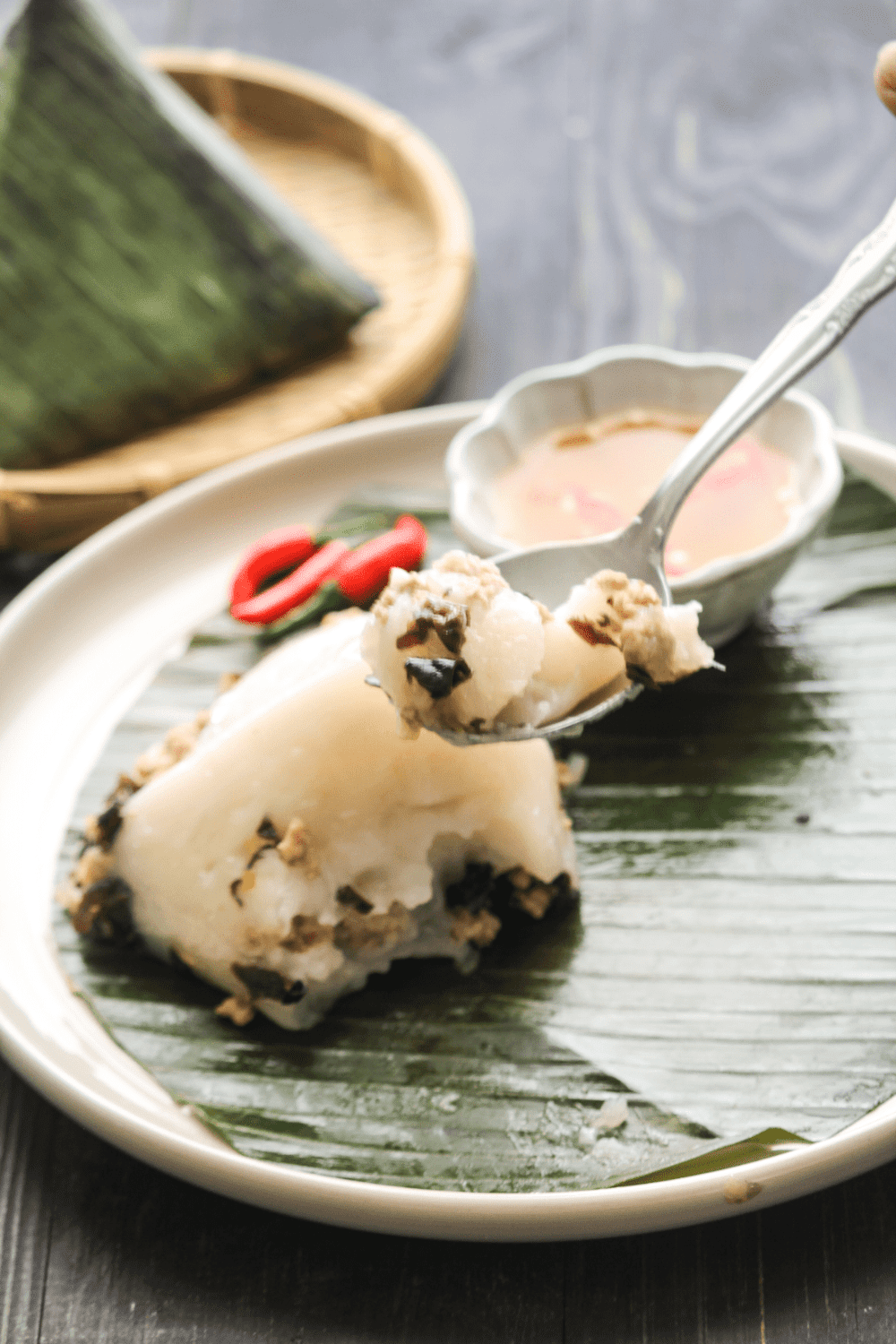
Fresh herbs and vegetables
- Fresh Herbs: Serve Banh Gio with a side of fresh herbs such as cilantro, mint, and Thai basil. Their vibrant flavors and fragrant aroma enhance the overall taste.
- Lettuce or Salad Greens: Wrap a piece of Banh Gio in lettuce or salad greens for added freshness and crunch.
Pickled vegetables
- Pickled Carrots and Daikon: The tangy and slightly sweet flavor of pickled carrots and daikon radish provides a refreshing contrast to the savory Banh Gio.
Spicy condiments
- Sambal Oelek: If you enjoy a spicy kick, sambal oelek, a chili paste made from ground red chili peppers, adds a fiery element to Banh Gio.
- Sriracha: Another popular spicy condiment, sriracha sauce, offers a blend of heat and tanginess that pairs well with the flavors of Banh Gio.
Crispy shallots or fried garlic
- Sprinkle crispy shallots or fried garlic over the Banh Gio for added texture and aromatic notes.
Variations of banh gio
Banh Gio is a versatile dish that has inspired various regional and modern interpretations. Here are some exciting variations of Banh Gio that showcase unique flavors and ingredients:
- Banh Gio Hue:
- Originating from the central region of Hue in Vietnam, this variation features a colorful filling made with minced shrimp, pork, and mung bean paste. It is known for its vibrant appearance and delicate flavors.
- Banh Gio Bac Ninh:
- Hailing from Bac Ninh province in northern Vietnam, this version of Banh Gio is characterized by a filling made with fatty pork belly, wood ear mushrooms, and Chinese sausage. It has a rich and hearty taste.
- Banh Gio Chay (Vegetarian/Vegan Banh Gio):
- Catering to vegetarian and vegan preferences, this variation replaces the meat filling with a combination of tofu, mushrooms, and vegetables. It offers a delightful and flavorful option for those following a plant-based diet.
- Modern Fusion Fillings:
- Contemporary twists on Banh Gio have emerged, incorporating diverse fillings such as smoked salmon, grilled chicken, or even cheese. These innovative variations introduce new flavors while preserving the essence of the traditional dish.
- Sweet Banh Gio:
- Departing from the savory nature of traditional Banh Gio, sweet versions have gained popularity. These sweet Banh Gio often feature fillings such as mung bean paste, coconut, or sweetened sticky rice, resulting in a delightful dessert-like treat.
- Regional Specialties:
- Various regions in Vietnam have their own unique takes on Banh Gio, incorporating local ingredients and flavors. For example, Banh Gio Sai Gon from Ho Chi Minh City may include additional ingredients like Vietnamese sausage or quail eggs.
Substitute ingredient of banh gio
If you need to substitute certain ingredients in Banh Gio, here are some alternatives you can consider:
- Banana Leaf: If banana leaves are not available, you can use parchment paper as a substitute. Cut the parchment paper into squares or rectangles to wrap the Banh Gio.
- Rice Flour: If you don’t have rice flour on hand, you can try using glutinous rice flour as a substitute. Keep in mind that the texture and taste may vary slightly.
- Tapioca Starch: Tapioca starch can be substituted with cornstarch or potato starch in equal amounts. These starches will help provide a chewy texture to the dough.
- Ground Pork: If you prefer a different protein or follow a vegetarian/vegan diet, you can replace ground pork with ground chicken, beef, or even tofu crumbles for a plant-based version.
- Dried Shiitake Mushrooms: Substitute dried shiitake mushrooms with other types of dried mushrooms, such as dried wood ear mushrooms or dried porcini mushrooms. Soak and chop them before using.
- Dried Shrimp: For a vegetarian or vegan option, omit the dried shrimp altogether. You can enhance the flavors by adding more herbs, spices, or umami-rich ingredients like soy sauce or mushroom powder.
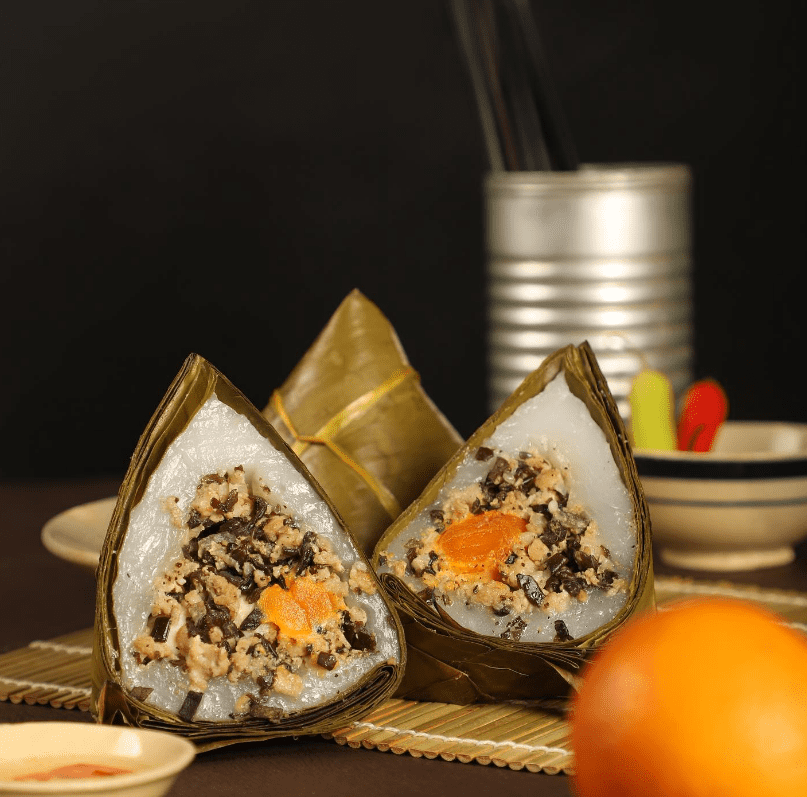
How to store banh gio?
Proper storage ensures that Banh Gio remains fresh and flavorful for longer periods. Here are some guidelines on how to store Banh Gio:
Refrigeration
If you plan to consume Banh Gio within a day or two, you can store it in the refrigerator. Place the Banh Gio in an airtight container or wrap it tightly with plastic wrap to prevent it from drying out. It can be refrigerated for up to 2 days.
Freezing
- To extend the shelf life of Banh Gio, you can freeze it for longer-term storage. Follow these steps:
- Allow the Banh Gio to cool completely.
- Individually wrap each Banh Gio tightly with plastic wrap.
- Place the wrapped Banh Gio in a freezer-safe bag or airtight container.
- Label the container with the date for reference.
- Store in the freezer for up to 2 to 3 months.
Thawing and reheating
- When you’re ready to enjoy the frozen Banh Gio, thaw it in the refrigerator overnight.
- To reheat, you can choose either steaming or microwaving:
- Steaming: Place the thawed Banh Gio in a steamer and steam for 5 to 10 minutes until heated through.
- Microwaving: Remove the plastic wrap, place the Banh Gio on a microwave-safe plate, and heat on high for 1 to 2 minutes, or until heated to your desired temperature.
It’s important to note that the texture of Banh Gio may slightly change after refrigeration or freezing. However, proper storage methods will help preserve its flavors and prevent it from drying out. Enjoy the stored Banh Gio within a reasonable time for the best taste and texture.
Common mistakes when making banh gio
While making Banh Gio can be a rewarding culinary experience, it’s important to be aware of common mistakes that can affect the outcome of the dish. Here are some common mistakes to avoid when making Banh Gio:
- Insufficient soaking time for dried ingredients: If your recipe includes dried mushrooms or dried shrimp, make sure to soak them in water for the recommended amount of time. Failing to properly hydrate these ingredients can result in a tough or chewy texture.
- Inadequate seasoning: Banh Gio filling relies on a well-balanced combination of spices and seasonings to enhance its flavors. Make sure to taste and adjust the seasoning as needed to ensure a delicious outcome.
- Overfilling the Banh Gio: It’s crucial not to overfill the Banh Gio with the filling. Overfilling can lead to difficulty in wrapping and can cause the Banh Gio to burst while cooking.
- Incorrect wrapping technique: Properly wrapping the Banh Gio is essential to ensure it holds its shape during cooking. Take care to fold the banana leaf or parchment paper tightly around the filling, creating a secure package.
- Inadequate steaming or boiling time: Ensure that you steam or boil the Banh Gio for the recommended amount of time in the recipe. Undercooking can result in a raw or doughy center, while overcooking can lead to a dry and rubbery texture.
- Lack of patience during resting time: Allowing the rice flour dough to rest before use is crucial for achieving the desired texture. Avoid rushing this step as it helps the starches hydrate and leads to a softer and more pliable dough.
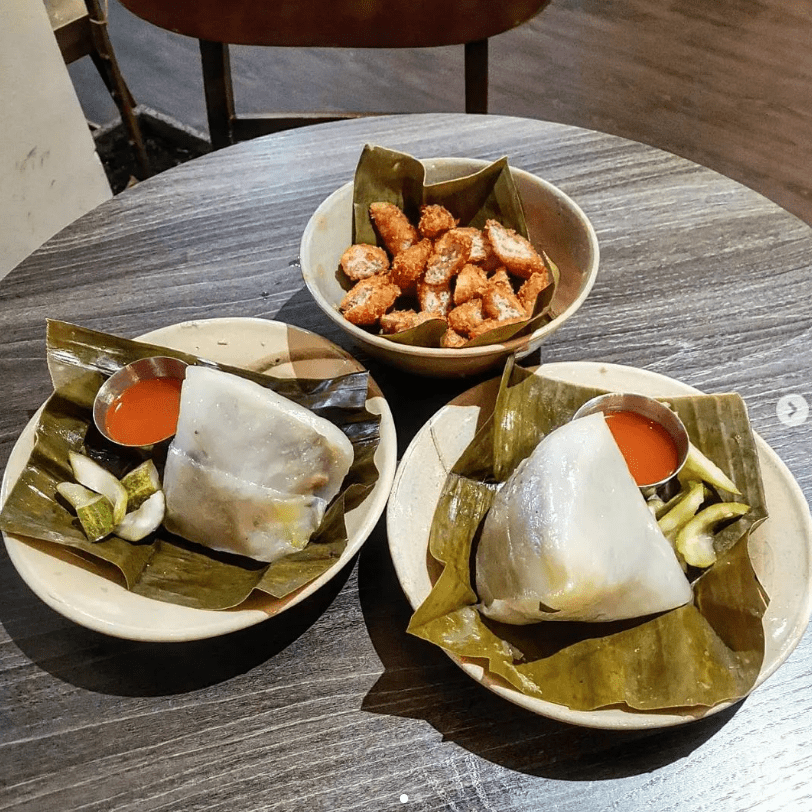
Tips and tricks to make perfect banh gio
To help you achieve perfect Banh Gio, here are some useful tips and tricks to keep in mind:
- Properly hydrate dried ingredients: Ensure that you soak dried mushrooms and dried shrimp for the recommended time to achieve a tender texture and optimal flavor. Drain and chop them before adding them to the filling.
- Season the filling generously: Taste the filling mixture and adjust the seasoning accordingly. Don’t be afraid to add more spices, herbs, or sauces to achieve a well-balanced and flavorful filling.
- Take care with the rice flour dough: When preparing the rice flour dough, gradually add water and mix thoroughly until you achieve a smooth batter. Avoid adding too much water at once to prevent the dough from becoming too thin.
- Rest the dough: Allow the rice flour dough to rest for the recommended time, usually around 30 minutes. This resting period helps the starches hydrate and results in a more elastic and pliable dough.
- Properly assemble and wrap: Take care not to overfill the Banh Gio to prevent bursting during cooking. Place the filling in the center of the dough, leaving enough space around the edges for folding. Follow the proper wrapping technique, ensuring the banana leaf or parchment paper is tightly secured.
- Steam or boil with care: When cooking Banh Gio, follow the recommended steaming or boiling time to ensure the dough is thoroughly cooked without becoming overly soft or mushy. Keep an eye on the cooking process to avoid undercooking or overcooking.
- Experiment with fillings and flavors: While traditional Banh Gio is delicious on its own, don’t hesitate to experiment with different fillings and flavors. Explore variations with additional ingredients like wood ear mushrooms, quail eggs, or different types of meats for a creative twist.
- Serve with complementary condiments: Enhance your Banh Gio experience by serving it with a variety of dipping sauces, fresh herbs, and pickled vegetables. These accompaniments can elevate the flavors and add interesting textures to each bite.
FAQs
Is Banh Gio gluten-free?
Banh Gio is not inherently gluten-free as it traditionally uses rice flour, which does not contain gluten. However, it’s important to note that some variations of Banh Gio may include additional ingredients or fillings that could potentially contain gluten.
If you have gluten intolerance or follow a strict gluten-free diet, it is advisable to check the specific recipe and ingredients used or opt for gluten-free alternatives.
How is the rice flour dough for Banh Gio prepared?
The rice flour dough for Banh Gio is typically prepared by combining rice flour, tapioca starch, and salt in a mixing bowl. Water is gradually added while continuously stirring until a smooth batter is formed.
The batter is then allowed to rest for a period of time, usually around 30 minutes, to hydrate the starches and achieve a more elastic texture. The dough is then ready to be used for wrapping the filling and steaming or boiling to cook the Banh Gio.
What is the difference between Banh Gio and Banh Bot Loc?
Here’s a table highlighting the main differences between Banh Gio and Banh Bot Loc:
| Banh Gio | Banh Bot Loc | |
| Origin | Northern and central regions of Vietnam | Central region of Vietnam |
| Dough | Soft and chewy rice flour dough | Transparent, gelatinous tapioca flour dough |
| Filling | Savory filling with ground pork and herbs | Savory filling with shrimp and pork |
| Shape | Pyramid-shaped | Translucent, cylindrical or rectangular |
| Cooking | Steamed or boiled | Steamed or boiled |
| Texture | Soft rice dough with a chewy bite | Chewy and slightly bouncy texture |
| Serving | Often served with dipping sauce and herbs | Typically served with dipping sauce and herbs |
| Region | Popular in various regions of Vietnam | Prominent in Hue, the former imperial capital |
| Variation | Has regional and modern variations | Has variations like Banh Bot Loc Tran (wrapped), and Banh Bot Loc La (wrapped in banana leaves) |
Please note that these are general differences, and variations of both Banh Gio and Banh Bot Loc can exist based on personal preferences, regional variations, and creative interpretations.
Can I freeze Banh Gio for later consumption?
Yes, you can freeze Banh Gio for later consumption. To freeze Banh Gio, make sure they are fully cooked and cooled. Individually wrap each Banh Gio tightly with plastic wrap, or place them in freezer-safe containers or bags.
Label them with the date and store them in the freezer for up to 3 to 4 weeks. When ready to eat, thaw the frozen Banh Gio in the refrigerator overnight and reheat them by steaming or microwaving until heated through.
Can Banh Gio be served cold?
Banh Gio is traditionally served warm or hot, as it is steamed or boiled during the cooking process. However, if you prefer to eat it cold, you can refrigerate leftover Banh Gio and consume them chilled.
Keep in mind that the texture and flavors might change slightly when served cold, and some people may prefer the softer and warmer version.
Is Banh Gio suitable for breakfast, lunch, or dinner?
Banh Gio is a versatile dish that can be enjoyed at various times of the day. In Vietnam, it is commonly eaten for breakfast or as a mid-day snack. However, Banh Gio can also be enjoyed as a light lunch or dinner option.
Its savory flavors and satisfying texture make it suitable for different meal times. Whether you prefer it as a morning treat, an afternoon snack, or a part of your main meal, Banh Gio can be enjoyed throughout the day.
Are there any dietary restrictions or allergies to consider with Banh Gio?
When it comes to dietary restrictions or allergies, it’s essential to consider the specific ingredients used in the Banh Gio recipe. Traditional Banh Gio contains rice flour, which is naturally gluten-free.
However, variations or additional ingredients may be used, such as fillings that may include meat, seafood, or other allergens. It’s crucial to check the recipe and adjust the ingredients accordingly to accommodate any dietary restrictions or allergies. If you have specific concerns, it’s best to consult the recipe or seek advice from a healthcare professional.
How is Banh Gio different from other Vietnamese rice cakes?
- Banh Gio differs from other Vietnamese rice cakes in several ways. Here are a few points of distinction:
- Texture: Banh Gio has a soft and chewy texture, while other Vietnamese rice cakes like Banh Bot Loc have a translucent and slightly gelatinous texture.
- Filling: Banh Gio typically features a savory filling made with ground pork, mushrooms, and herbs. Other rice cakes, such as Banh Bot Loc, may have different fillings, such as shrimp and pork.
- Shape: Banh Gio is pyramid-shaped when wrapped, whereas other rice cakes may come in different shapes like round, square, or rectangular.
- Regional Variations: Different regions of Vietnam have their own unique rice cake specialties, each with distinct flavors, fillings, and techniques. Banh Gio is popular in various regions, while others like Banh Beo and Banh Cuon have their regional specialties.
These differences in texture, filling, shape, and regional variations contribute to the diverse array of Vietnamese rice cakes, each with its own unique characteristics and culinary traditions.
Can I make Banh Gio without a steamer?
Yes, you can make Banh Gio without a steamer. If you don’t have a steamer, you can use a large pot or deep skillet with a lid to create a makeshift steamer. Here’s how:
- Fill the pot or skillet with a few inches of water.
- Place a heat-safe plate or a steamer rack at the bottom of the pot, ensuring it is above the water level.
- Arrange the wrapped Banh Gio on the plate or steamer rack, leaving space between them.
- Cover the pot or skillet with the lid and steam over medium heat until the Banh Gio is fully cooked, following the recommended steaming time in the recipe.
Can I adjust the seasoning in the filling according to personal taste?
Absolutely! The seasoning in the filling of Banh Gio can be adjusted according to personal taste preferences. The recipe typically provides a general guideline for seasoning, but you can customize it based on your desired flavors.
You can increase or decrease the amount of herbs, spices, or sauces used in the filling to suit your taste buds. Just remember to taste and adjust the seasoning as you go along, ensuring that the flavors are balanced and to your liking. Don’t be afraid to experiment and make the filling uniquely your own!
Conclusion
Now that we’ve reached the end, Banh Gio stands as a delectable and cherished Vietnamese delicacy that captivates both locals and food enthusiasts worldwide. With its origins deeply rooted in Vietnamese culture, Banh Gio showcases the country’s rich culinary heritage and the artistry of its traditional cuisine.
The process of making Banh Gio involves a delicate balance of flavors and textures. The soft and chewy rice flour dough, enveloping a savory filling of ground pork, mushrooms, and aromatic herbs, creates a harmonious blend that delights the taste buds. Each bite reveals the cultural significance and passion infused into this beloved dish.
Beyond its gastronomic appeal, Banh Gio holds a special place in Vietnamese traditions and celebrations. It is a dish that brings people together, evoking a sense of community and shared heritage. Whether enjoyed as a street food snack or as a part of festive gatherings, Banh Gio’s presence adds joy and flavor to the Vietnamese culinary landscape.
While Banh Gio showcases its traditional form, it has also evolved with modern interpretations and regional variations. From innovative fillings to sweet renditions, these adaptations demonstrate the adaptability and creativity within Vietnamese cuisine.
As we bid farewell to this exploration of Banh Gio, we encourage you to embark on your own culinary journey and experience the delights of this Vietnamese treasure. Whether you savor its traditional flavors or venture into new variations, Banh Gio promises a sensory experience that will leave a lasting impression and a newfound appreciation for the culinary wonders of Vietnam.